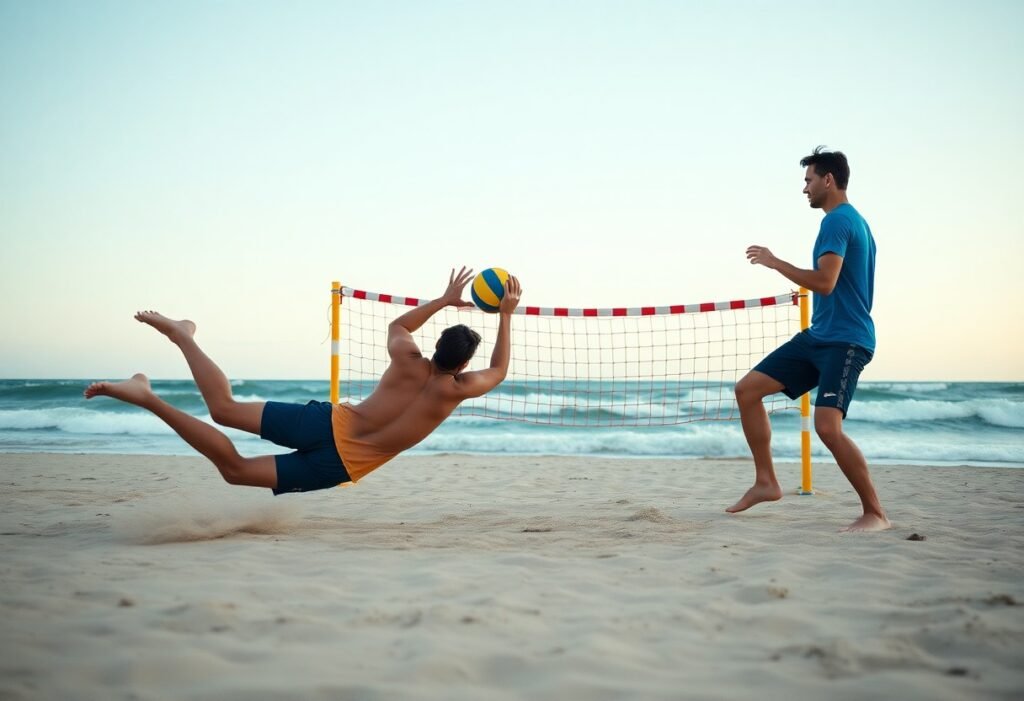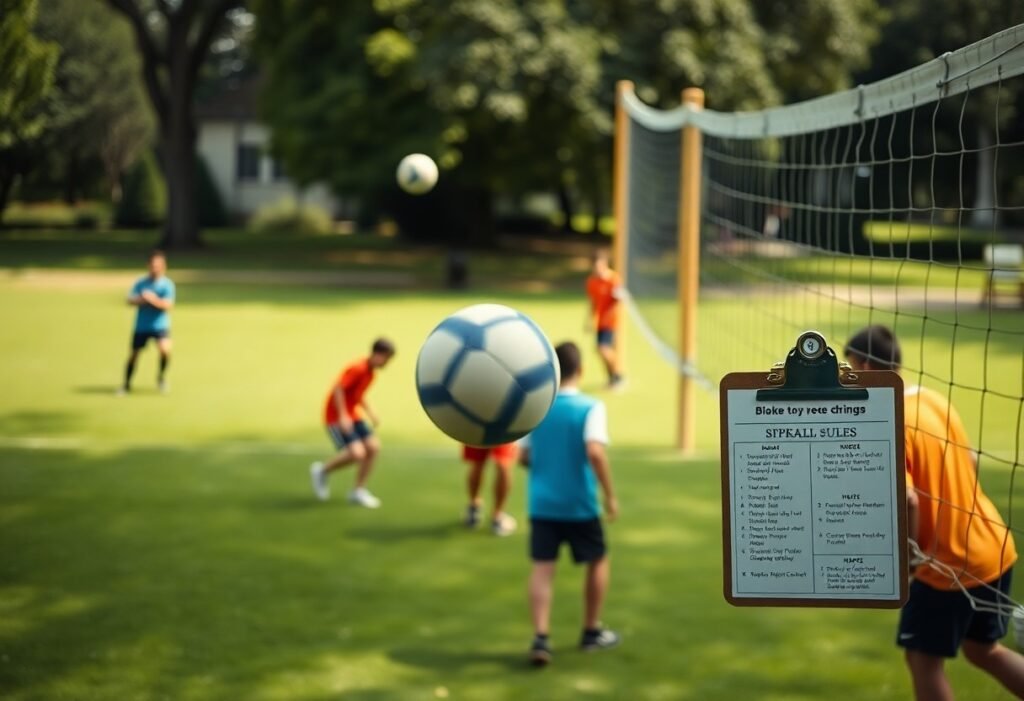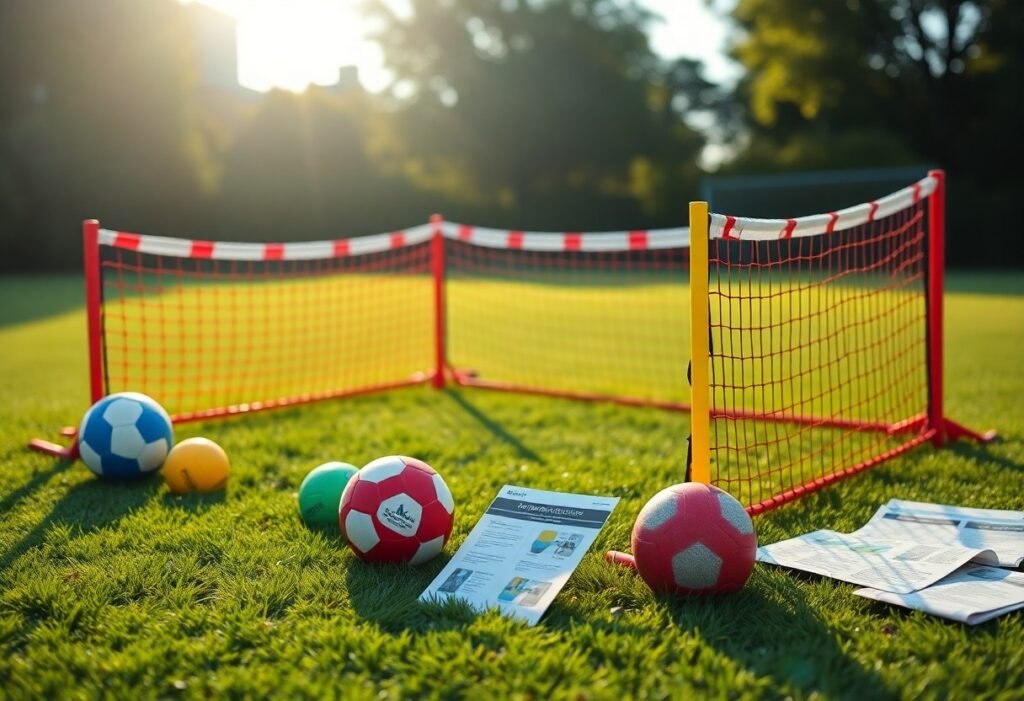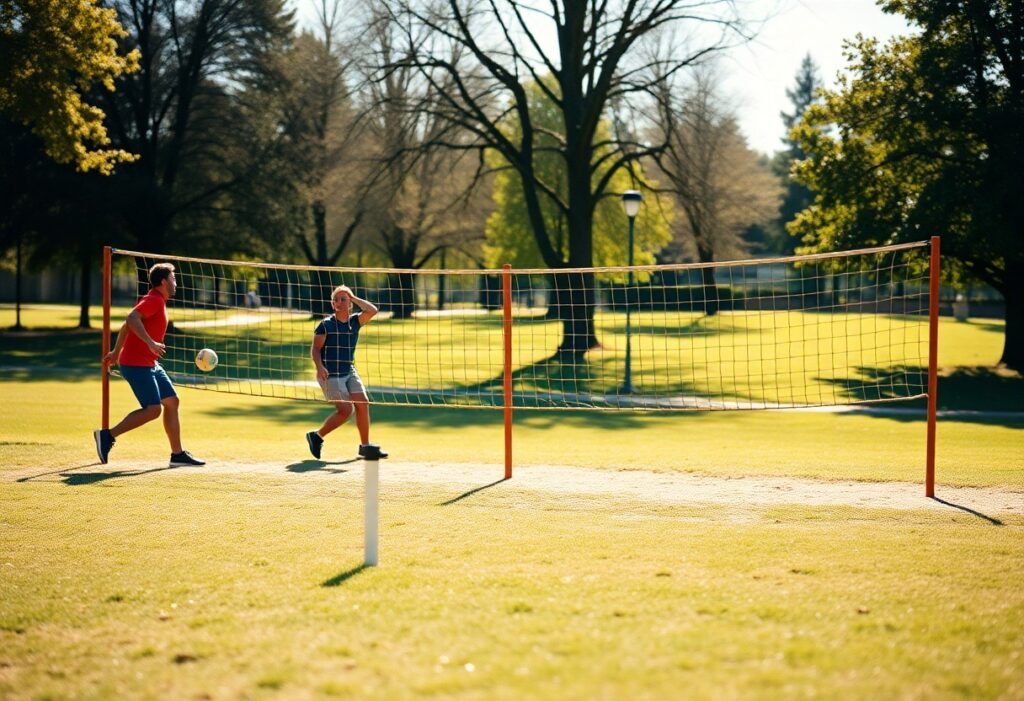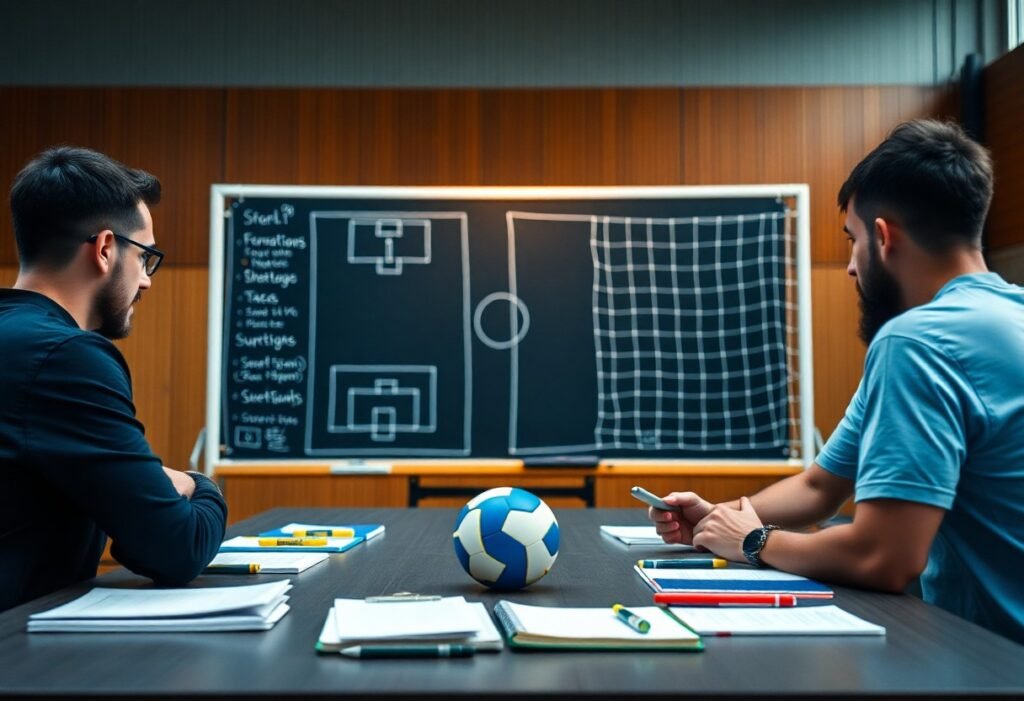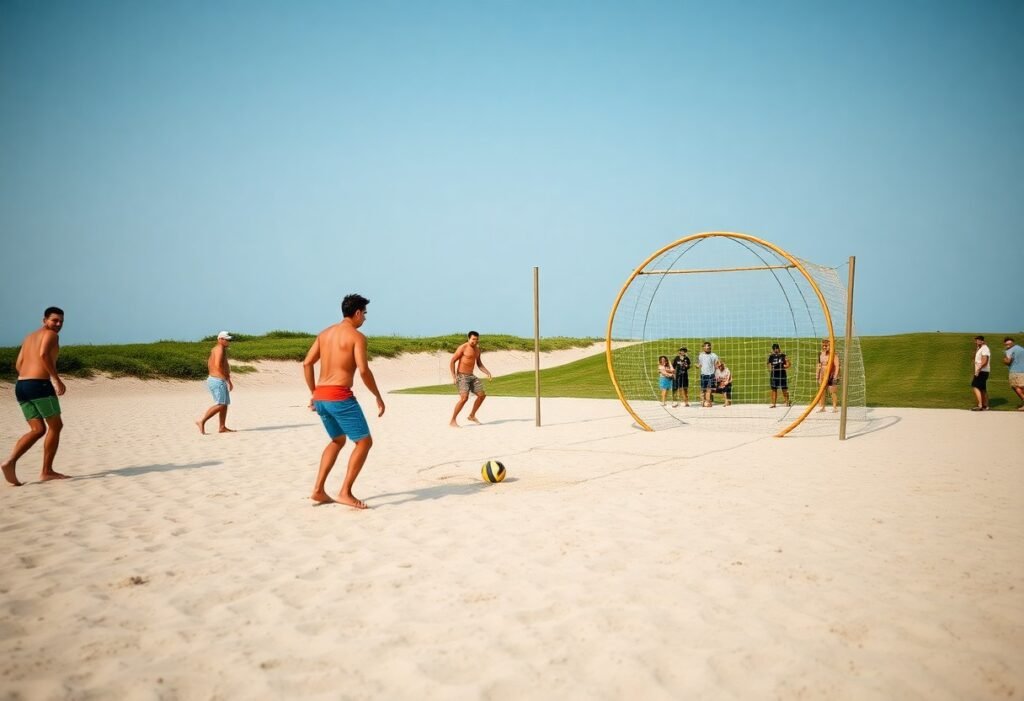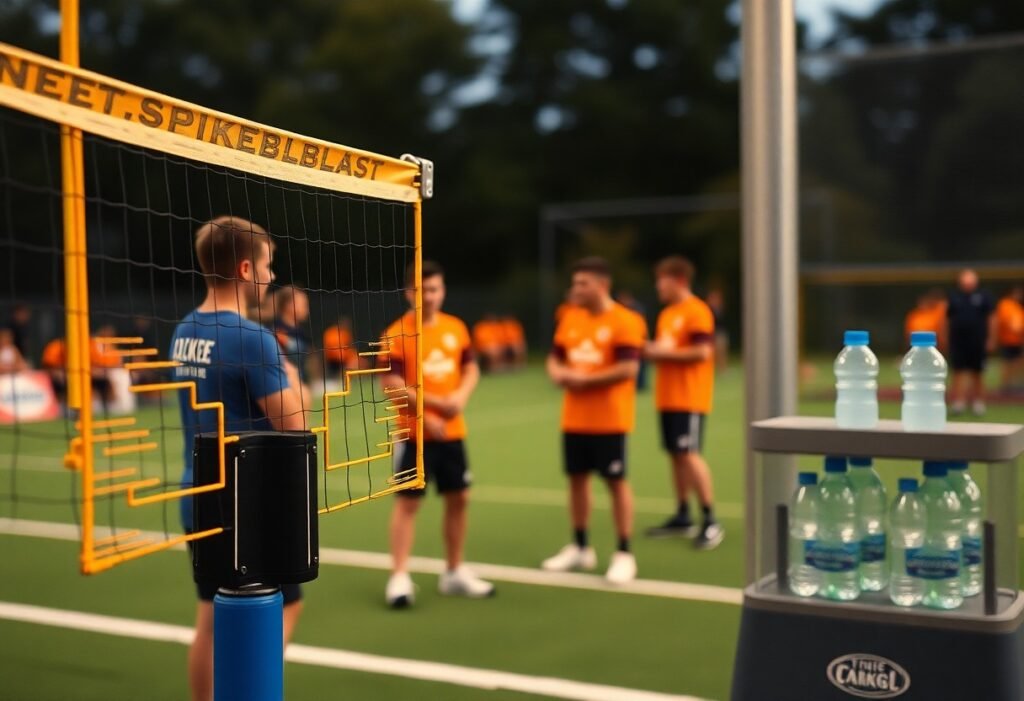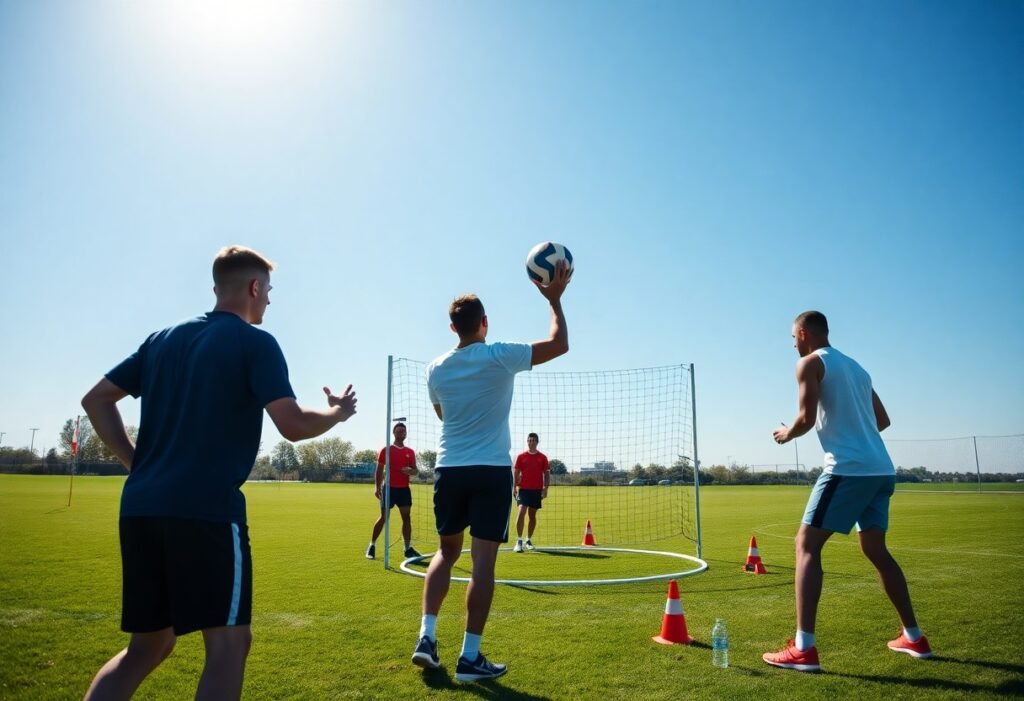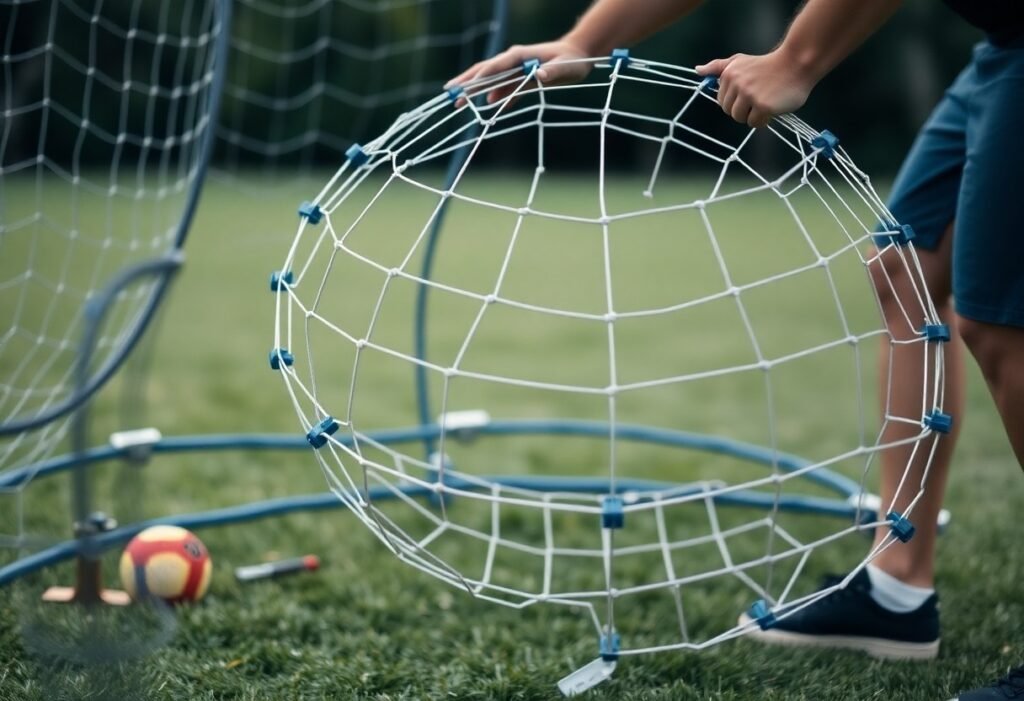Just when you think you’ve mastered Spikeball, there’s a whole new level waiting for you. In this guide, you’ll discover tricks and advanced moves that will elevate your game and impress your friends. From the deceptive fake-out serve to the challenging backhand spike, these techniques will enhance your skills and confidence on the court. Prepare to take your gameplay to new heights by incorporating these dynamic maneuvers into your strategy.
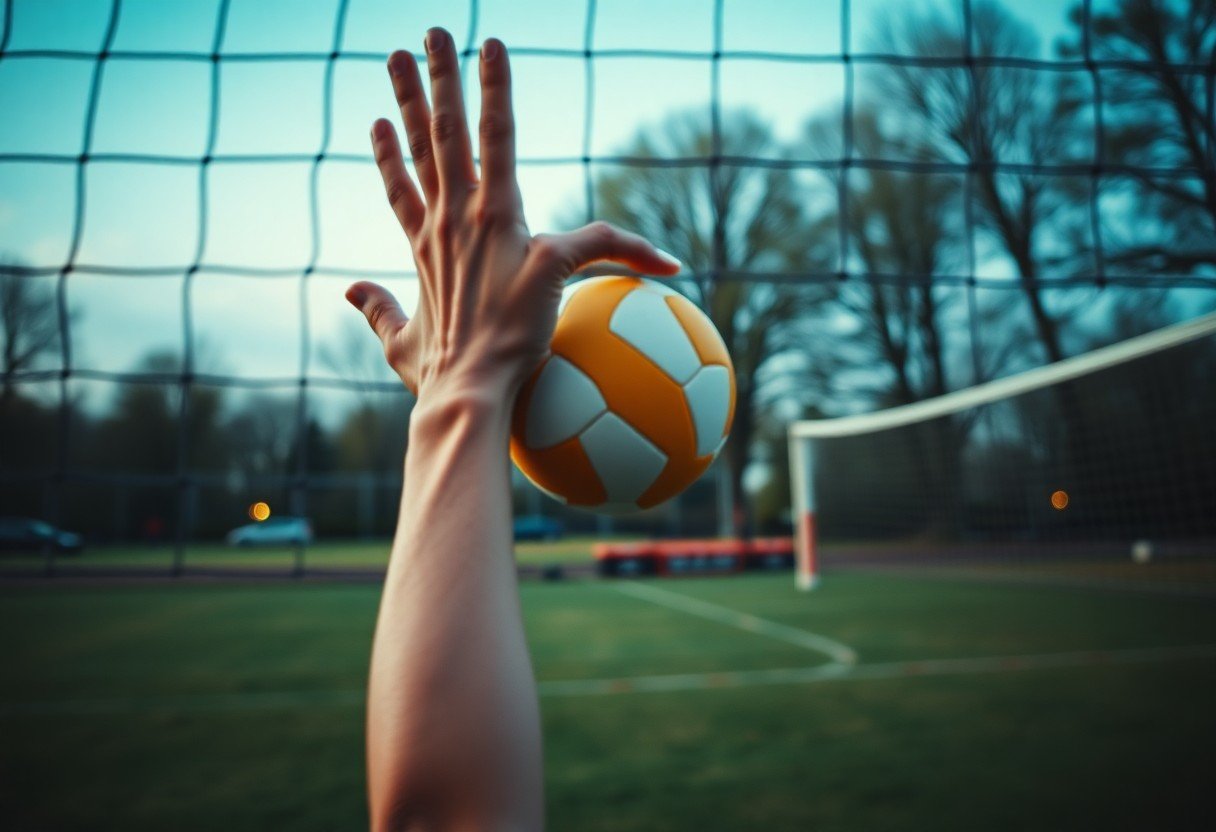
Key Takeaways:
- Mastering footwork is vital for executing advanced Spikeball moves effectively.
- Incorporate spins and fakes to outsmart opponents and create scoring opportunities.
- Practice teamwork and communication to enhance performance during trick plays.
Understanding the Basics of Spikeball
Overview of Spikeball Rules
In Spikeball, teams of two players each take turns serving the ball onto the net, with the objective of making the ball bounce off in such a way that the opposing team cannot return it. Each team has up to three touches to return the ball, similar to volleyball. Play continues until one team fails to return the ball or commits a fault, such as hitting the net or failing to serve properly. A game typically goes up to 21 points, requiring a two-point margin to win.
Essential Techniques for New Players
As a new player, mastering fundamental techniques such as the serve, pass, and hit will significantly enhance your performance. Start with a solid underhand serve to get comfortable with the ball’s trajectory. Aim for controlled, accurate passes to set up your teammate for an effective hit. Focus on hitting the ball with an open hand to provide better spin and control.
Importance of Positioning and Movement
Effective positioning and movement are vital in Spikeball to maintain control and respond to the opposing team’s plays. Staying light on your feet and being aware of your partner’s position allows for better coordination. Make sure to position yourself strategically around the net to anticipate where the ball will go, ensuring you can react quickly.
More on Importance of Positioning and Movement
Good positioning gives you the edge in predicting plays and creating successful outcomes. For example, when your teammate serves, shift closer to the net, ready to intercept the ball if it’s directed your way. Moving in sync with your partner not only enhances your defense but also maximizes your offensive potential. Practice shifting quickly and staying low to effectively adjust your position as the game unfolds.
Fundamental Tricks Every Player Should Know
The Standard Serve
The standard serve is your go-to move, setting the tone for each rally. This straightforward technique involves tossing the ball lightly in front of you and striking it with your hand. Focus on generating accuracy and control rather than just power, as a well-placed serve can put your opponents on the defensive. Practicing this serve allows you to build a solid foundation in your game and is necessary for developing more advanced techniques. For more tips on enhancing your skills, check out Improve Your Spike Game.
The Drop Shot
The drop shot is all about finesse. It’s executed by gently tapping the ball so it barely clears the net, catching your opponents off guard. This technique is effective because it exploits the distance between players, requiring precise timing and placement. You’ll want to practice this move to ensure you can pull it off when the moment is right.
To master the drop shot, focus on your hand positioning and angle. Instead of hitting the ball with full force, use a light touch while practicing to achieve just the right arc. You’ll find that, with practice, this subtlety can change the dynamic of your matches, opening up opportunities for point-scoring.
The Spin Serve
The spin serve adds a layer of unpredictability to your game. By striking the ball at an angle and generating spin, you make it curve as it approaches the net, making it challenging for the receiver. Work on developing a consistent technique to harness the spin effectively, as this will keep your opponents guessing.
To achieve the desired spin, experiment with different ball-hitting techniques and grips. The key lies in your wrist action and follow-through. With practice, the spin serve can become a lethal addition to your arsenal, creating openings for quick, decisive points against your rivals.
The Backhand Shot
The backhand shot is vital for players looking to enhance their versatility. This technique allows you to return shots effectively from your non-dominant side, reducing predictability in your plays. Execute this shot with a strong hand position and an open stance to ensure power and accuracy.
For greater effectiveness, practice transitioning between your forehand and backhand during games. The versatility of being able to use both sides will keep your opponents on their toes and may lead to unexpected opportunities to score. Deft backhand shots can catch your opposing team off-guard, breaking their rhythm and giving you the edge you need to secure points.

Advanced Moves to Elevate Your Game
- The Jump Serve
- The Overhead Smash
- The Spike Overhead
- The Sidearm Serve
Table of Moves
| Move | Description |
|---|---|
| The Jump Serve | A powerful serve initiated from a jump to gain height and angle. |
| The Overhead Smash | Aiming to finish the point with an aggressive overhead attack. |
| The Spike Overhead | A sharp downward shot that targets the opponent’s weak spots. |
| The Sidearm Serve | A versatile serve that can catch opponents off guard. |
The Jump Serve
The Jump Serve adds height to your serve, giving it a favorable angle and speed. By launching into the air before striking the ball, you can achieve a more aggressive serve that is difficult for opponents to predict and return effectively. Timing and precision are important; focus on your foot placement and swing to maximize power.
The Overhead Smash
The Overhead Smash is a game-changer for closing out points. Position yourself under the ball, jump, and hit downwards. This move can generate immense force, often resulting in an unreturnable shot. Timing is key, so ensure you track the ball’s trajectory to execute a successful smash effectively.
The Overhead Smash not only demonstrates your skill but can also intimidate opponents, forcing them to play defensively. When timed perfectly, it can end rallies quickly, as the ball leaves little to no chance for return. Practicing this move will enhance your offensive capabilities, making you a formidable player on the court.
The Spike Overhead
The Spike Overhead builds on the power of the overhead smash with a sharper angle. Essentially, you aim for the net as you leap, striking the ball downward with precision. This move can catch your opponents off guard, especially if you’ve set it up with a deceptive play beforehand.
The Spike Overhead is particularly effective when targeting gaps in your opponents’ positioning. By mastering this shot, you can maintain offensive pressure and exploit weaknesses in your opponent’s defense. Consistent practice will help you refine your technique, allowing you to execute this advanced move with more confidence and accuracy.
The Sidearm Serve
The Sidearm Serve offers diversity in your serving strategy and can be a game-changer in matches. By striking the ball from the side, you create unexpected spins and angles that can perplex opponents. This serve can be particularly effective after establishing a rhythm with standard serves.
Utilizing the Sidearm Serve adds unpredictability to your game. It allows you to target specific areas on the net, making it difficult for opponents to anticipate your next move. With dedicated practice, you can harness the unique angles to create scoring opportunities, thus enhancing your overall gameplay strategy.
Trick Shots to Impress Your Friends
The No-Look Shot
Master the No-Look Shot to leave your friends bewildered. Simply turn your head away from the net as you spike the ball, relying on your peripheral vision to aim accurately. Surprise your opponents while showcasing your confidence; perfect for catching them off guard and scoring unexpected points.
The Behind-the-Back Shot
The Behind-the-Back Shot is a stylish and impressive maneuver that guarantees attention. As the ball approaches, reach behind your body and strike the ball with a flick of your wrist. This not only adds flair to your play but also makes it challenging for your opponents to anticipate your move.
This shot requires precise timing and practice, but once you get the hang of it, your friends will be amazed. Focus on the ball while positioning your body; then, as you strike, ensure your hand makes contact at the perfect angle. Though it may take time to master, the delight on your friends’ faces will make it worth the effort.
The Underhand Shot
For a sneaky approach, try the Underhand Shot. Grip the ball low, and using a swinging motion, gently scoop the ball to send it over the net. This unexpected technique can confuse your opponents, especially when they’re bracing for a powerful strike.
With the Underhand Shot, you can catch your opponents off-guard, especially during key moments of the game. Practice your wrist flick to ensure the ball spins effectively, making it both difficult to read and react to. Landing this shot consistently will elevate your gameplay and keep your friends guessing what’s next.
The Fake Serve
Employ the Fake Serve to completely disrupt your opponents’ strategy. As you approach to serve, start your wind-up but let the ball drop instead of making contact. This misdirection can provoke a reaction, allowing you to quickly follow up with a real serve or pass.
Executing a successful Fake Serve involves timing and positioning. You want to create the illusion of a powerful serve while maintaining control. Perfecting this technique can give you a tactical edge, making your games more dynamic as you play with your friends’ expectations.

Defensive Strategies and Counter Moves
Reading Your Opponent
To effectively defend against your opponent’s moves, focus on observing their body language and anticipating their next action. Look for telltale signs, such as their foot positioning or paddle grip, which can indicate whether they’re preparing for a spike, lob, or drop shot. By honing your ability to read these cues, you’ll improve your defensive response and position yourself for a successful counter.
The Rally Return
The Rally Return is imperative for maintaining possession during extended plays. A well-placed return puts pressure on your opponents while giving you a chance to regain control. Aim for accuracy and variation in your shots, alternating between soft lobs and quick returns to keep them guessing.
For the Rally Return, focus on positioning yourself strategically behind the net. As your opponent strikes the ball, quickly gauge its trajectory and choose a return style that suits the situation. Whether it’s a powerful slap or a delicate tap, ensure you target the gaps in your opponent’s defense to maximize effectiveness.
Blocking Techniques
Blocking Techniques are vital for thwarting high-speed attacks. Position yourself correctly at the net to intercept spikes, using your paddle’s angle to redirect the ball back into play. A firm stance will enhance your stability and help you react quickly to incoming shots.
When practicing Blocking Techniques, consider employing both closed and open-handed methods. The closed technique ensures a firm block against fast strikes, while the open-handed approach is ideal for controlling softer volleys. Experiment with angles to find what works best for your style and the type of shots you often encounter.
Anticipating Spikes
Anticipating Spikes involves recognizing patterns in your opponent’s play. By understanding their tendencies, you can position yourself to intercept powerful shots effectively. Keep an eye on their movement and track the ball’s speed and direction to prepare for the exchange.
To enhance your skill in Anticipating Spikes, practice scenario drills with a partner, targeting different angles and velocities. Over time, you’ll develop an instinct for spotting when a spike is coming, allowing you to make preemptive adjustments that improve your defensive play and potentially turn the tide in your favor.
Training Drills to Master Advanced Moves
- Partner Drills for Timing
- Solo Drills for Control
- Incorporating Conditioning
- Video Analysis for Improvement
Partner Drills for Timing
| Drill Name | Description |
| Double Touches | Work with a partner to practice hitting the ball twice before sending it to the net, focusing on rhythm. |
| Rally Countdown | Set a count of consecutive hits to achieve with your partner, helping sharpen your timing on returns. |
Partner Drills for Timing
Engaging in partner drills enhances your sense of timing, which is key for executing advanced moves. A simple drill like double touches allows you to get comfortable with coordinating hits, ensuring that you and your partner stay in sync. Additionally, using a rally countdown encourages you to focus on consistency during gameplay, reinforcing timing and rhythm while boosting your confidence.
Solo Drills for Control
Solo drills focus on enhancing your touch and control with the ball. Practicing against a wall can help refine your accuracy, as each hit allows you to adjust your technique without the pressure of partner dynamics. Aim for specific targets to improve your skill in directing the ball precisely where you want it.
Incorporating Conditioning
Incorporating conditioning into your training regimen is necessary for enduring longer matches. Focus on building your agility and endurance through high-intensity interval training (HIIT) that mimics the quick movements in Spikeball. A strong cardiovascular base will keep you at your peak performance throughout the game.
Video Analysis for Improvement
Utilizing video analysis maximizes your training efficiency by allowing you to visually assess and critique your gameplay. Recording your practice sessions or matches provides an opportunity to identify areas for improvement, such as footwork or hitting techniques. This visual feedback is valuable for accelerating your skill development.
To wrap up
Taking this into account, mastering Spikeball tricks and advanced moves can significantly elevate your gameplay and impress your friends. By practicing techniques like the set, the roll shot, and the sky ball, you strengthen your skills and enhance your strategic understanding of the game. Incorporate these moves into your routine, and you’ll notice improvement in your overall performance and enjoyment of Spikeball. Challenge yourself, stay persistent, and watch as your abilities grow, making your matches more dynamic and exciting.
FAQ
Q: What are some basic Spikeball tricks I can start with?
A: Basic tricks include the one-handed serve, the knee bounce, and the backhand shot. These moves help develop control and accuracy while playing.
Q: How can I master the ‘Around the World’ move?
A: To perform ‘Around the World,’ start by positioning your body to the side of the net. As you hit the ball, swing your arm around your body while making contact, ensuring a full rotation for an effective shot.
Q: What is the ‘Spiking’ technique, and how do I execute it?
A: The ‘Spiking’ technique involves jumping and hitting the ball with maximum force. Timing is vital; approach the net, jump off both feet, and aim to hit the ball at its peak height for an impactful spike.
Q: Are there advanced serves I can try?
A: Yes, advanced serves include the ‘Sidewinder’ and ‘Underhand Cut.’ The ‘Sidewinder’ involves spinning the ball sideways for unpredictable bounces, while the ‘Underhand Cut’ adds a slice for added spin.
Q: How do I effectively communicate with my teammate during advanced plays?
A: Effective communication involves verbal cues and hand signals. Establish specific calls for plays like ‘Switch’ for changing positions or ‘Go’ for initiating a play to enhance teamwork during advanced moves.


